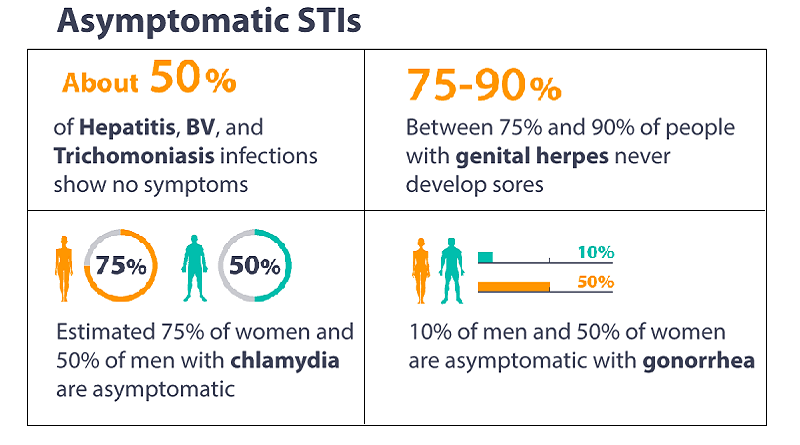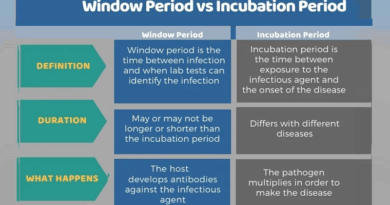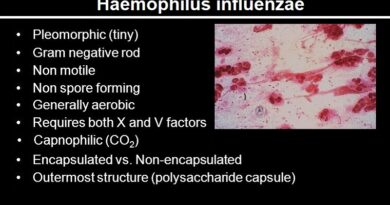Asymptomatic STDs, infected but no symptoms!
You say: “I have no symptoms at all”. Did you hear about Asymptomatic STDs, which is a person with an STD but no symptoms. Then, no way for you to know you have an STD. Also, some STDs can take years before symptoms appear.
You are a person who has no sex. Then, are you safe? Not 100% safe! You may get some STDs, even without sex. As sexually transmitted diseases can be acquired by means other than sex. Some can be transmitted just by contact, sharp tools contaminated with infected blood. Even a baby can get the disease from his infected mother during birth or through breast feeding. The good news these are rare, and sex remains the main way to be infected with STDs. So, if you refrain from un-protected sex, you can be roughly safe.
Transmission of Asymptomatic STDs
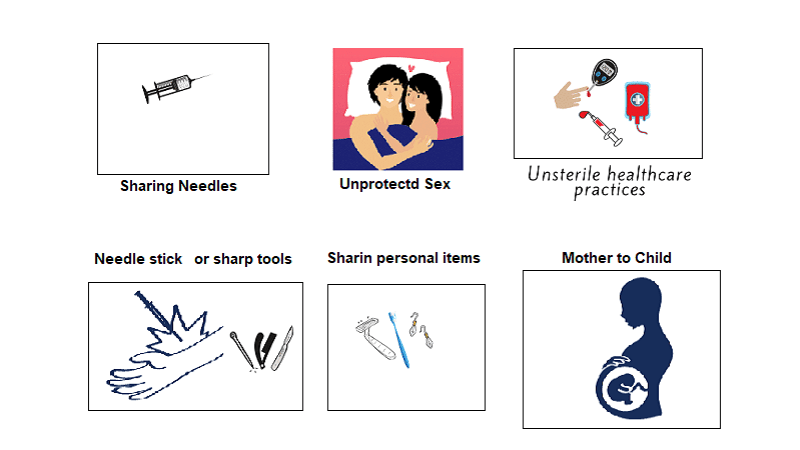
Sexually transmitted diseases (STDs), known as ‘sexually transmitted infections’ (STIs) or ‘venereal diseases’ (VD), are one of the most common infectious diseases. Why are they so common? Because many of these diseases show no symptoms, so they can be easily spread. Causative organisms can pass from infected person to another person through blood, semen, or vaginal and other bodily fluids. So, STDs spread mostly, but not exclusively, through sexual intercourse. There are cases where infections are transmitted non-sexually, such as from mother to infant during pregnancy or childbirth, through blood transfusions, shared unsterilized needles, or other means.
Long term damages of Asymptomatic STDs
You are infected with no symptoms, that means the disease does not make you feel sick right now. But that doesn’t mean it will go away peacefully! It may have an effect on you, or your partner. Left untreated, some STIs can cause long-term damage to your reproductive tract, such as pelvic inflammatory disease. This can make it difficult or impossible to have children. some HIV infected can be un-noticed, if without symptoms, but it may end into AIDs some years later. Hepatitis Be infection may pass un-noticed, then end with liver cirrhosis.
Asymptomatic STDs, No Symptoms
SDs can be caused by a number of microorganisms that vary in symptoms, size, life cycle, and susceptibility to available treatments. Chlamydia, gonorrhea, and syphilis are bacterial STDs. Viral STDs include HIV, genital herpes, genital warts (HPV), and hepatitis B and C. Trichomoniasis is caused by a parasite.
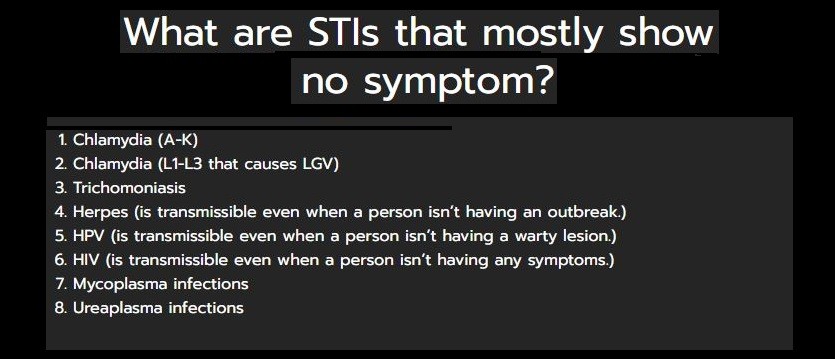
Chlamydia
Chlamydia is one of the most common STDs. It’s caused by a bacterium called Chlamydia trachomatis. It can be transmitted through anal or vaginal sex. Most people who have chlamydia don’t know, because they don’t experience symptoms. 75% of women and 50% of men have asymptomatic chlamydia infection. Get an STDs test done if you suspect you were exposed to infection.
Gonorrhea
Gonorrhea is another common sexually transmitted disease; it is the second after chlamydia. It is caused by N. Gonorrhea bacteria. In asymptomatic, it will be unnoticed. Therefore, it can cause permanent damage to the reproductive system. When gonorrhea is untreated, it can cause infertility in men and women.
Hepatitis B
- What is hepatitis B? It is an STD, that cause liver disease. It is caused by the Hepatitis B virus (HBV). Hepatitis B can cause liver damage, liver failure and even death.
- How is hepatitis B transmitted? Hepatitis B can be transmitted due to direct contact with body fluids of an infected person, like blood, semen, vagina, rectal or other body fluids.
Human papillomavirus (HPV)
- Human papillomavirus (HPV) is the most common STD, with an estimated 20 million people in the US, alone, infected every year. It’s transmitted through skin-to-skin contact. It can cause genital warts and can end into cervical cancer in women. You can have asymptomatic HPV and transmit the infection to others.
HIV/AIDS
HIV/AIDS is another sexually transmitted disease, that can be spread through sexual contact. It can also be spread by sharing needles to inject drugs, or blood transfusions (now rare). Get an STDs test if you suspect exposure to infection.
Syphilis
It is a sexually transmitted disease (STD). It is caused by Treponema pallidum bacteria. Syphilis can asymptomatic, where 1 in 10 people who are infected don’t show any symptoms. or show non-specific symptoms. So, it may be un-noticed, which makes it hard to diagnose without testing!
With Asymptomatic STDs, can you be infected others?
- If you’re infected with an asymptomatic STD, the pathogen can still be passed to others through sexual contact. Everyone is at risk of getting an STD, but some groups of people are more vulnerable for infection.
- Young people are more likely to have an STD than old ones because they have more activity which is unprotected sex.
SUMMARY
The primary reason that gonorrhea and chlamydial infections are untreated is that some infected persons never have symptoms. The most effective method to control these sexually transmitted diseases is routine screening or refrain from unprotected sex.
If you think you are infected with an STD, it’s important to get std tested. You should also get tested if you have had unprotected sex. If your tests are negative, the best way to safe is to consistently practice safer sex or refrain from sex activities.
SOURCES:

